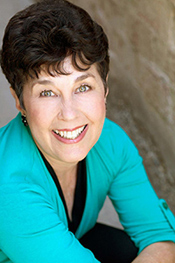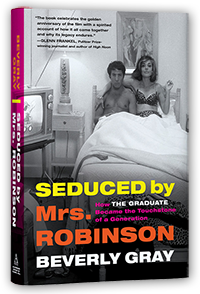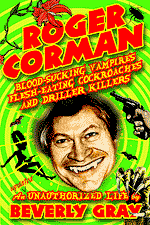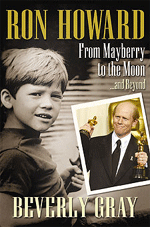Yesterday, wandering through Beverly Hills, I ogled a
private home that looks as though it should house a Wicked Witch or two. It was
a vivid reminder that Los Angeles -- land of giant donuts, movie palaces
modeled on Chinese temples, and a suburb named after Tarzan of the Apes -- has
always spawned fantasy. Today it’s clear that fantasy, Hollywood-style, is
still very much with us. I’m referring to the blockbuster opening of Disney’s Oz, The Great and Powerful, based on
characters devised by one of SoCal’s adopted sons, L. Frank Baum. Now the race
is on for both Disney and Warner Bros. (which holds the rights to MGM’s classic
Wizard of Oz) to bring additional Oz material to the waiting public.
Surely, nothing will ever supplant the 1939 musical in our
collective imagination. But The Wizard of
Oz, which has been called the most watched motion picture in history, didn’t
start out as a surefire hit. I’m taking most of my information from Aljean
Harmetz’s invaluable 1977 account, The
Making of the Wizard of Oz. Harmetz, whose mother had toiled in the
studio’s wardrobe department, provides an insider’s view of the twists and
turns surrounding the film’s completion. Her book, one of the first “making of”
volumes ever written, captures an era that itself is now very much somewhere
over the rainbow.
For one thing, fantasy was something new in Hollywood back
then. It was only because Walt Disney’s Snow
White had been a worldwide sensation that MGM ventured its own brand of
once-upon-a-time. The financial risks were huge. Idiot’s Delight, starring Clark Gable and Norma Shearer, and based
on a drama direct from Broadway, shot for 8 weeks at a cost of $1,519,000. This
was about average for a major MGM film in 1939. By contrast, Wizard of Oz took 22 weeks to shoot, and
cost $2,777,000. MGM would not recoup its investment for twenty years, until television sales made all the difference.
Then there were screenplay
and personnel problems. Believers in auteur
filmmaking should know how many hands wrote the script, and how many directors
stepped in to call the shots. Famously, Judy Garland became Dorothy when Fox
wouldn’t lend out Shirley Temple, and Buddy Ebsen had to relinquish the role of
the Tin Man ten days into production because the aluminum powder makeup made him deathly ill.
Margaret Hamilton, who became justly famous as the Wicked Witch of the West,
was a last-minute replacement for Gale Sondergaard, who objected when her role
shifted from a glamorous but deadly villainess (as in Disney’s Snow White) to a green-faced hag.
In 1939, special effects were still primitive, and Margaret
Hamilton bore the brunt of an experiment in the Munchkin Land sequence. As she
remembered, “There was a little elevator that was supposed to take me down,
with a bit of fire and smoke erupting to dramatize and conceal my exit. The first take ran like clockwork, I
went down out of my clothes, the fire and smoke erupted, and that's the one you
see." But on the second take, the timing was off, and she was exposed to
the flames. The grease in her copper-based makeup caught fire, leading to
second-degree burns on her face and hands. She was hospitalized for six weeks, before
returning to the Culver City lot.
Harmetz faults The
Wizard of Oz for sentimentality, but
also argues for its psychic power in capturing and surmounting childhood fears: “It is in the tangled subtext—beyond or beneath art—that the film has remained
alive.” Let’s see James Franco top that!








A wonderful, insightful post about an equally wonderful, and timeless movie. I haven't seen it in quite some time and now want to watch it again. I guess it's time to stop passing over that bluray and actually buy it this time!
ReplyDeleteYes, it's TIME to see the Wizard, the Wonderful Wizard of Oz! Welcome back, Brian!
ReplyDeleteThis a great reminder of what a gold standard Classic with a capital C the 1939 movie is. I saw it every year during its network runs - and wish I could see a revival on the Big Screen. I did not see 1985's Return to Oz - though a movie buddy from my school days swears it's worth a watch. I am not a big James Franco fan - don't dislike him, but he doesn't make me want to see any movie with his presence. So, the only aspect of Raimi's movie that might entice me in is the presence of my old partner in crime Michelle Williams as Glinda. Thinking she may have to settle for me watching the Blu-Ray, or a Netflix stream down the road.
ReplyDeleteIn the meantime - I'm joining both of you on the Yellow Brick Road for another viewing of the truly wonderful Wizard of Oz.
Follow the Yellow Brick Follow the Yellow Brick Follow the Yellow Brick Road . . . to Movieland!
ReplyDeleteI'm looking forward to the new Oz movie, but I'll always love the original :)
ReplyDeleteThanks for writing, Sharon. Why do YOU think the movie really strikes a chord for so many of us?
ReplyDeleteI had no idea that The Wizard of Oz was such a dangerous production for two of the actors!
ReplyDeleteThe filmmakers were really moving into uncharted territory with The Wizard of Oz's special effects demands. Though it seems hard to believe, filmmaking has gotten safer over the years. But not always -- and I'll probably write about that soon.
ReplyDelete